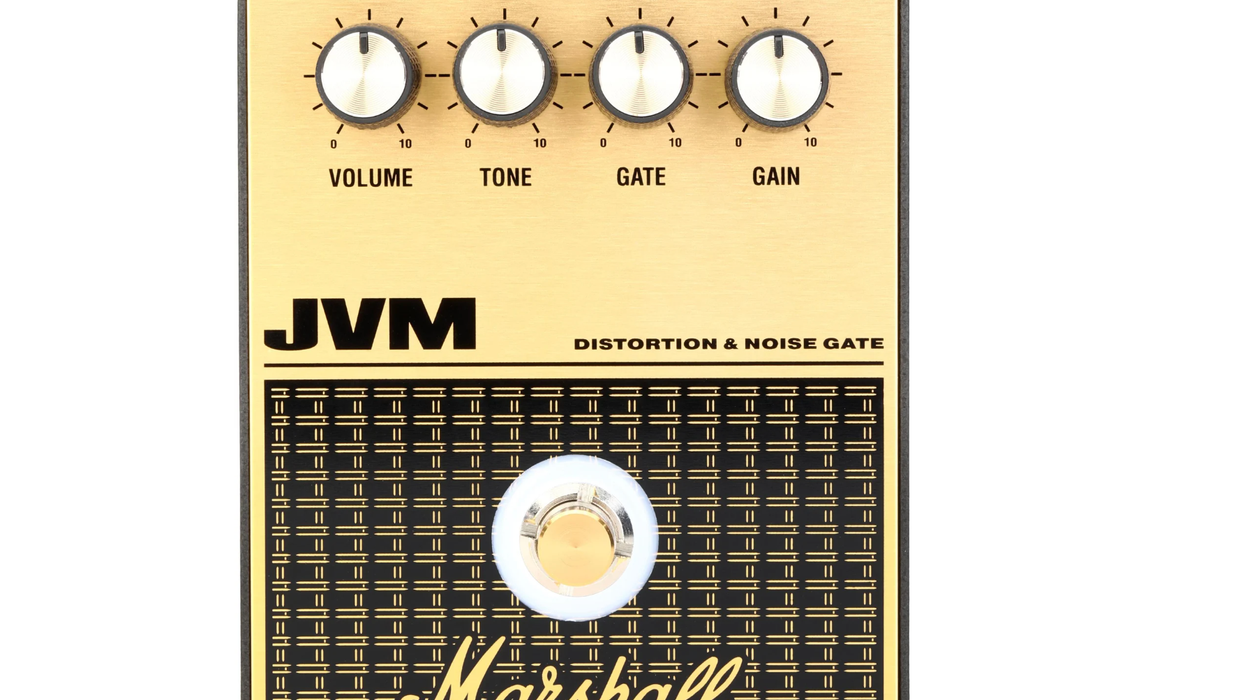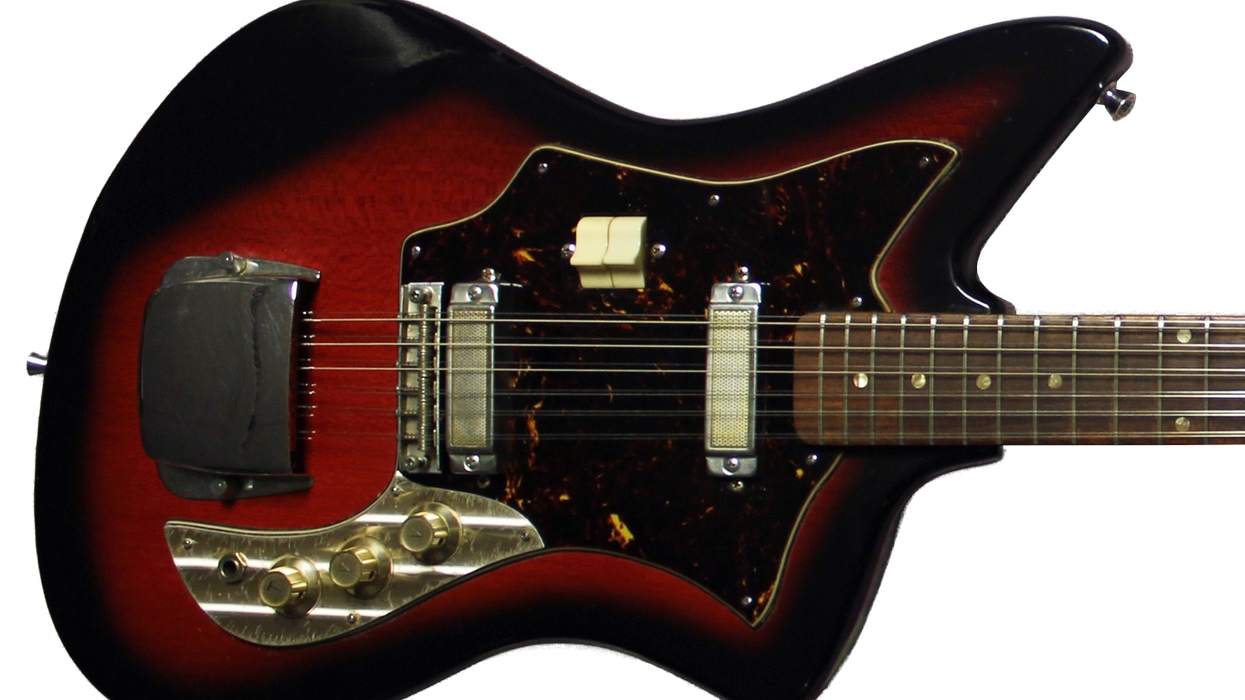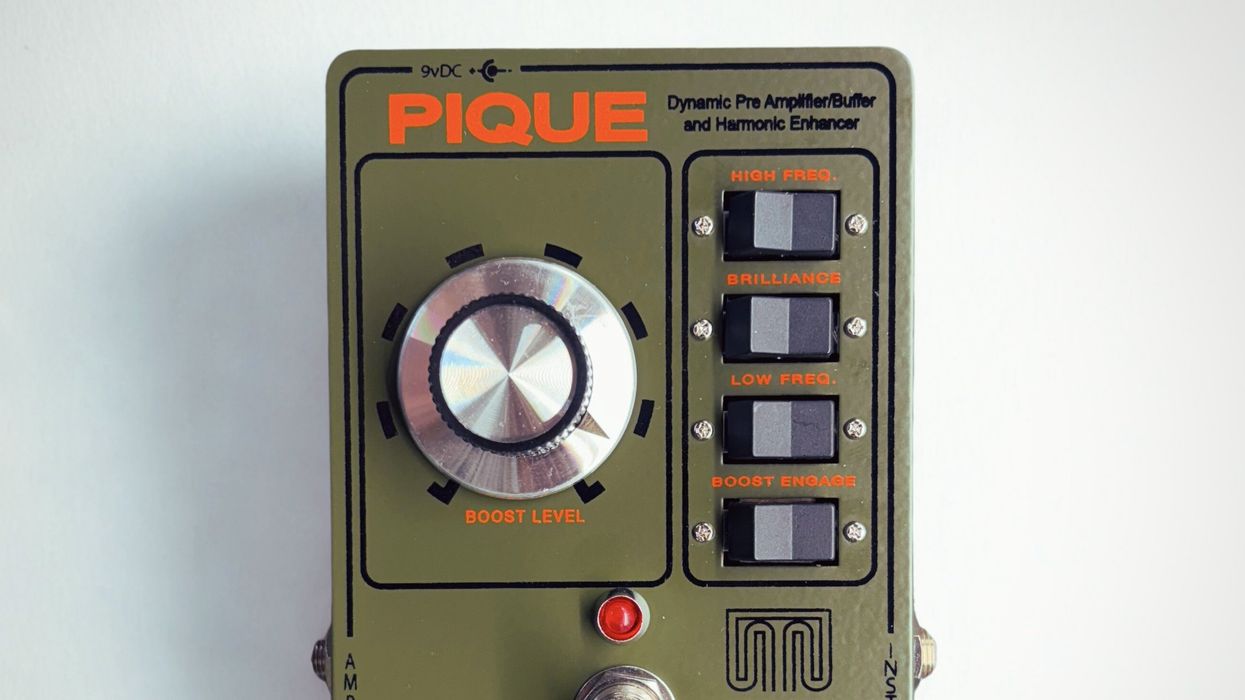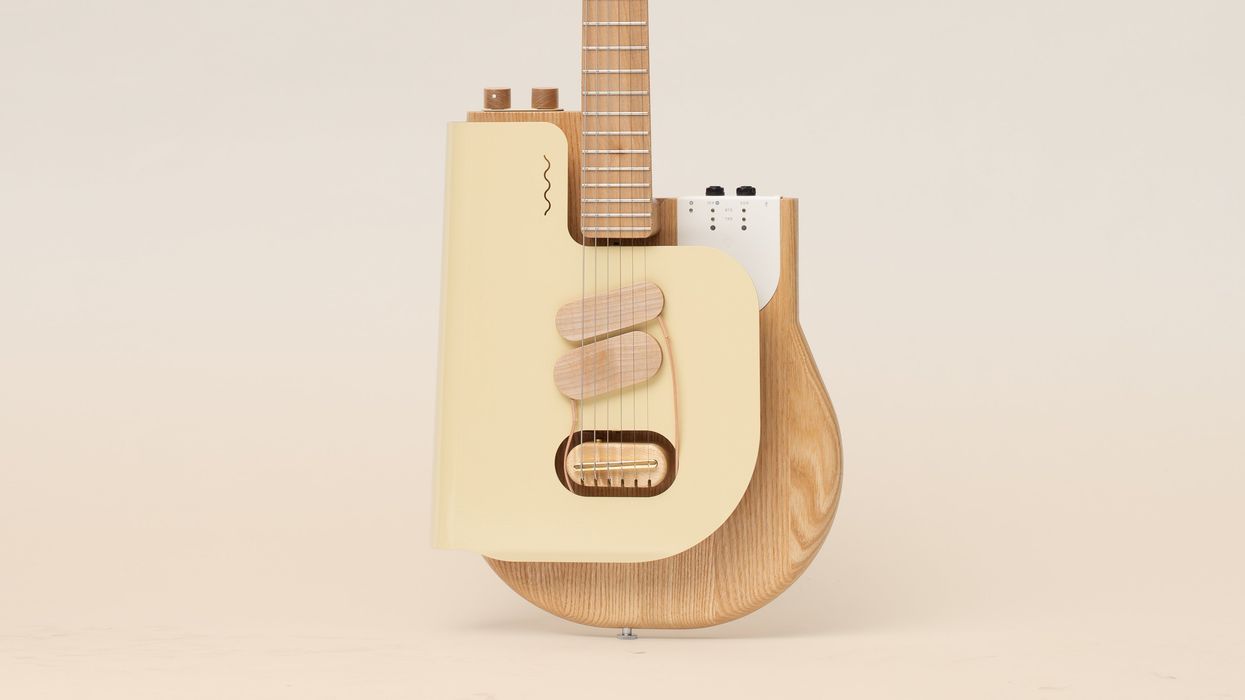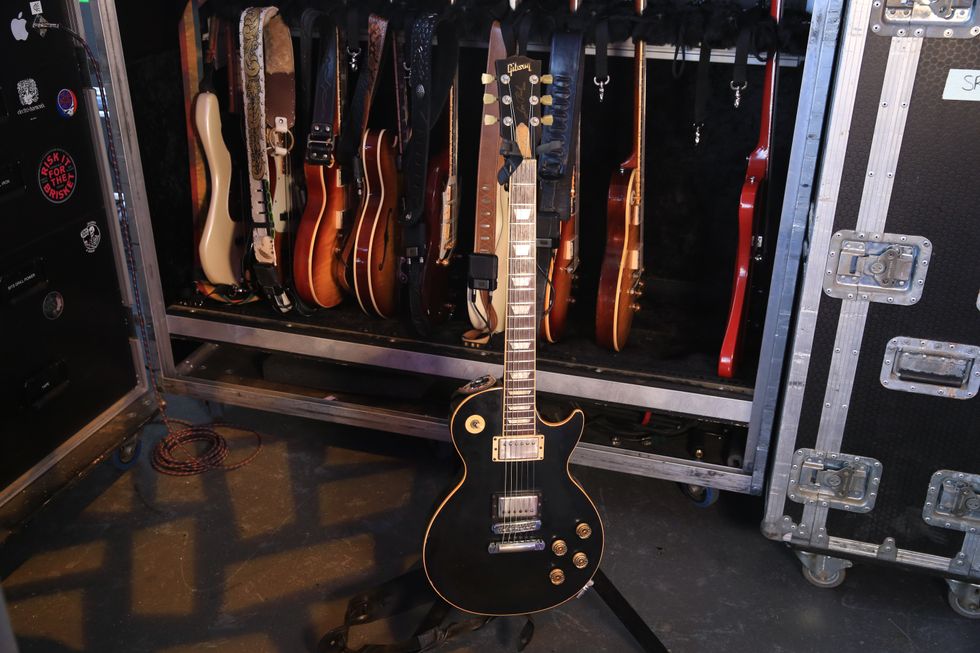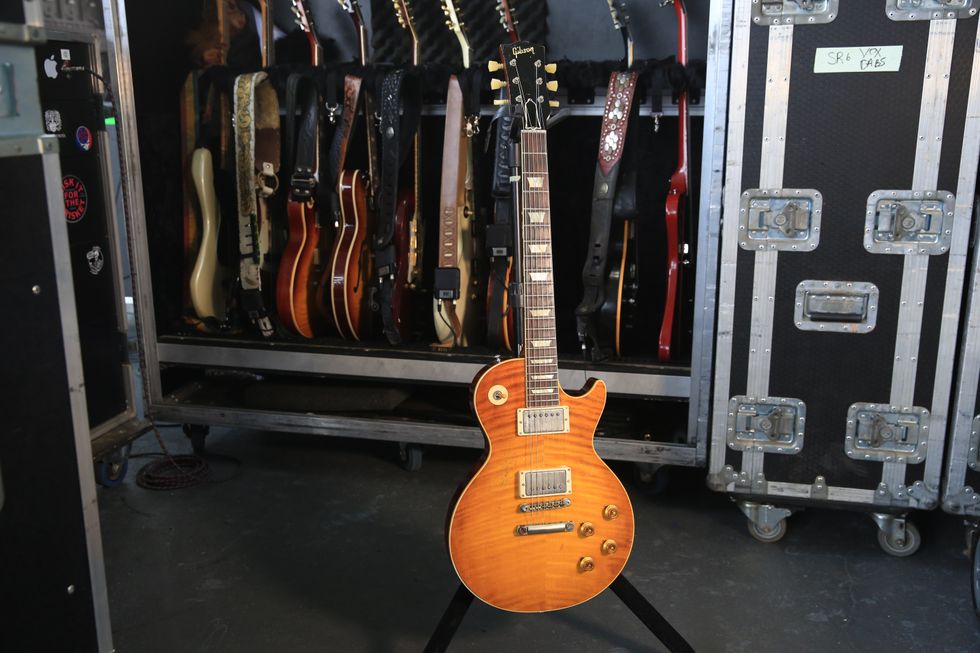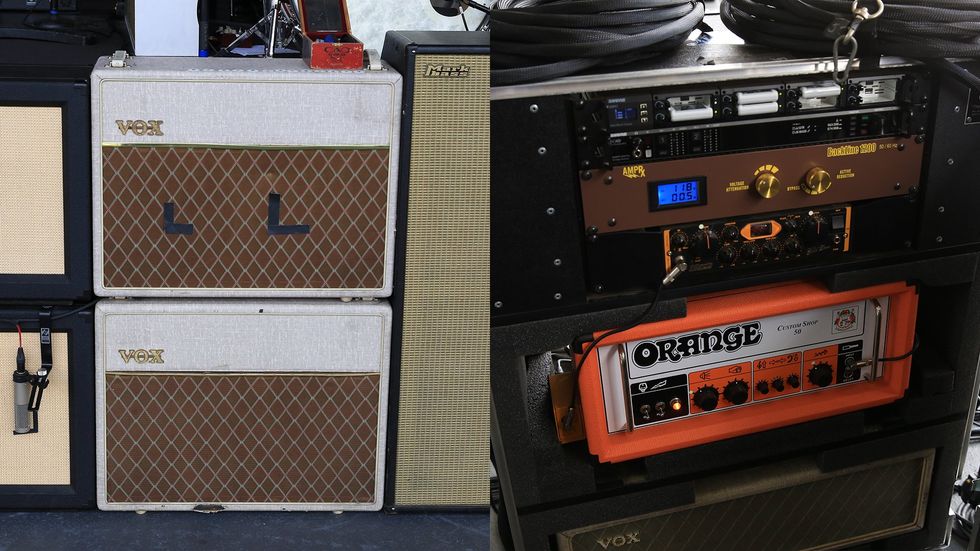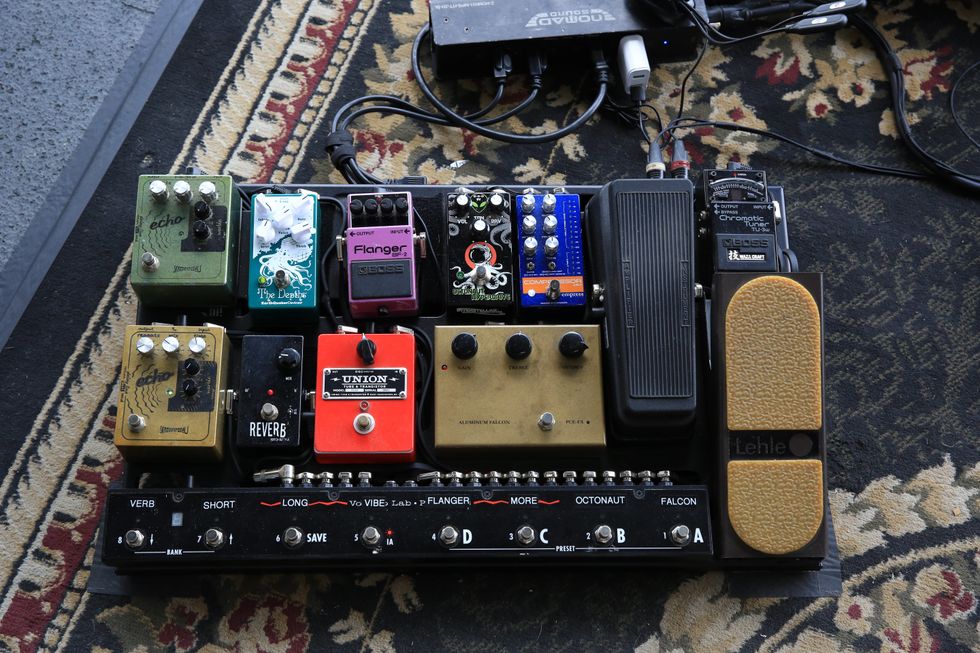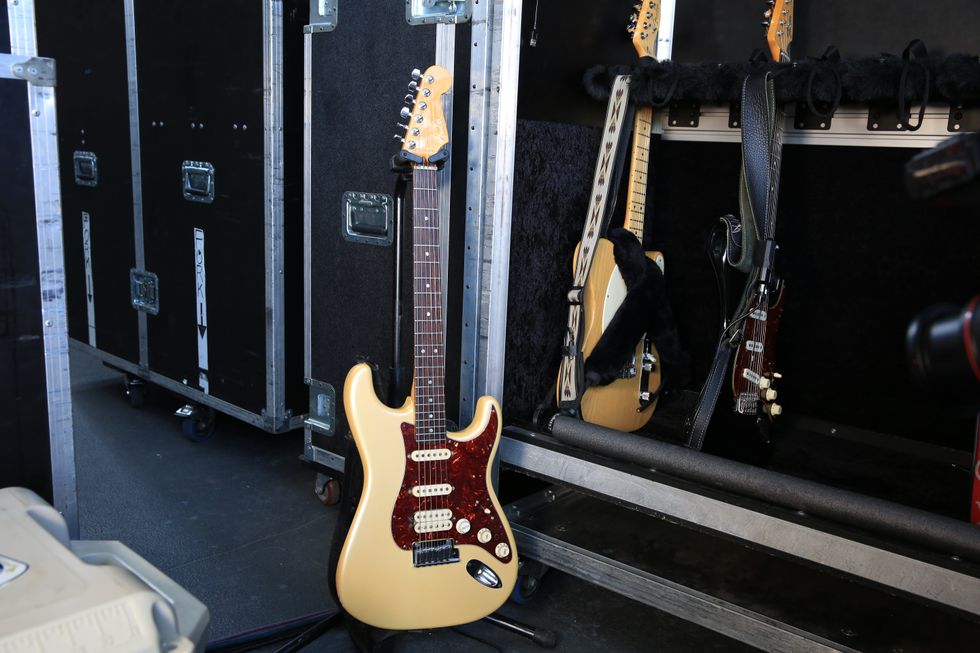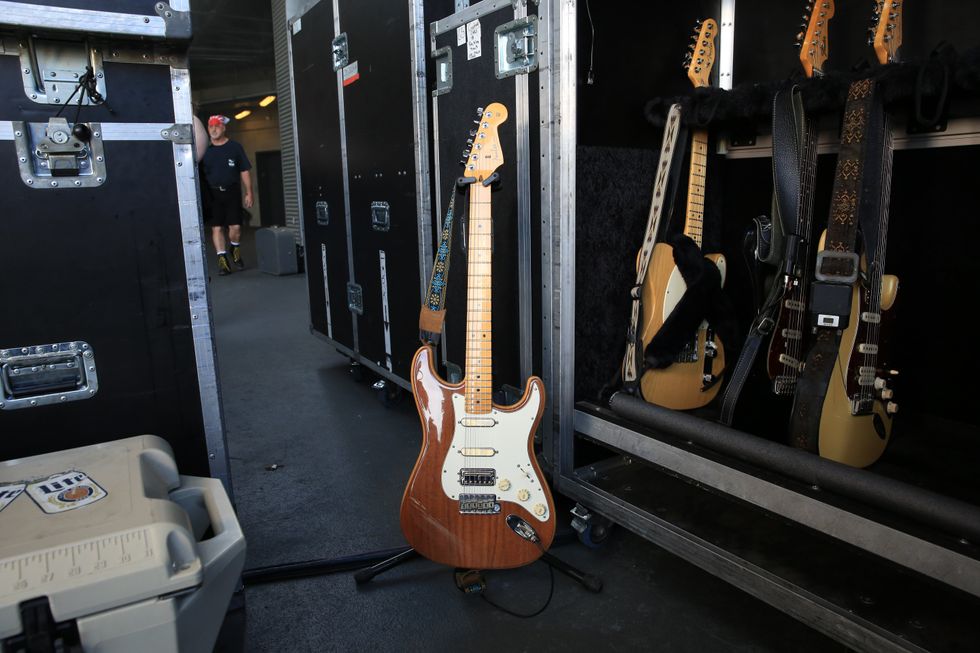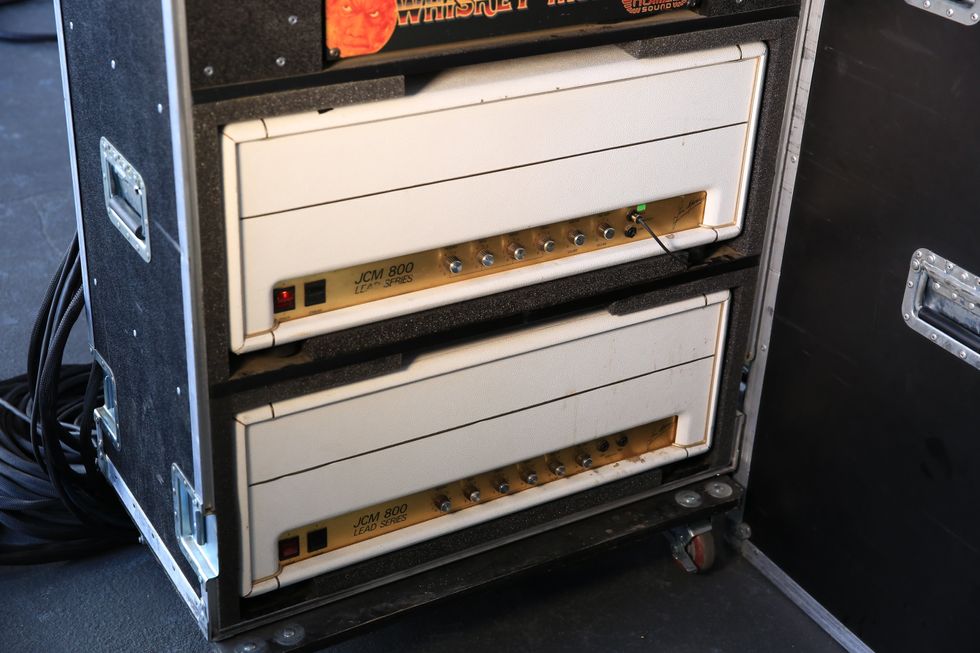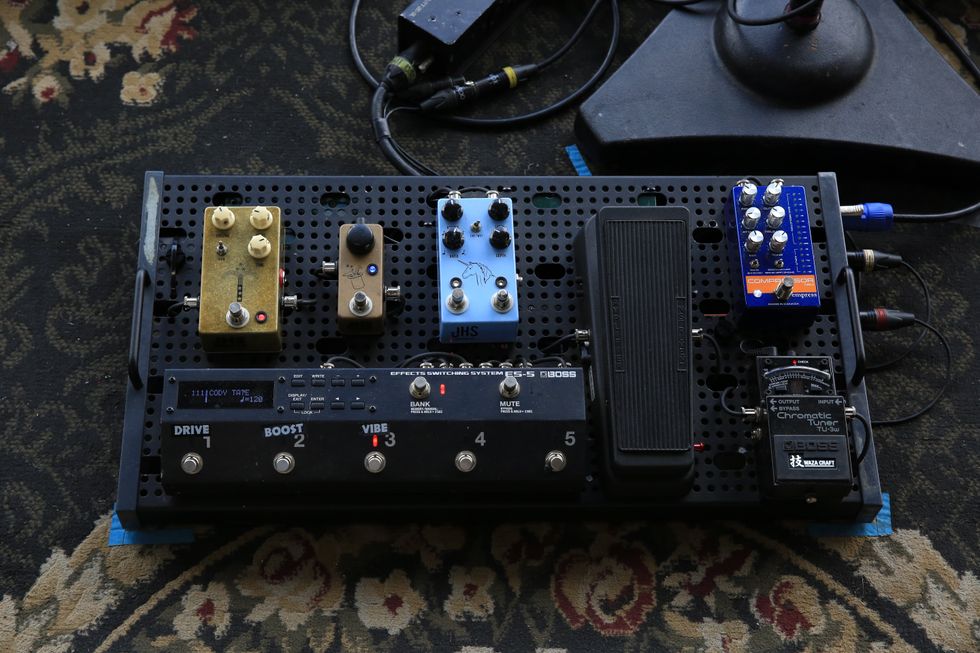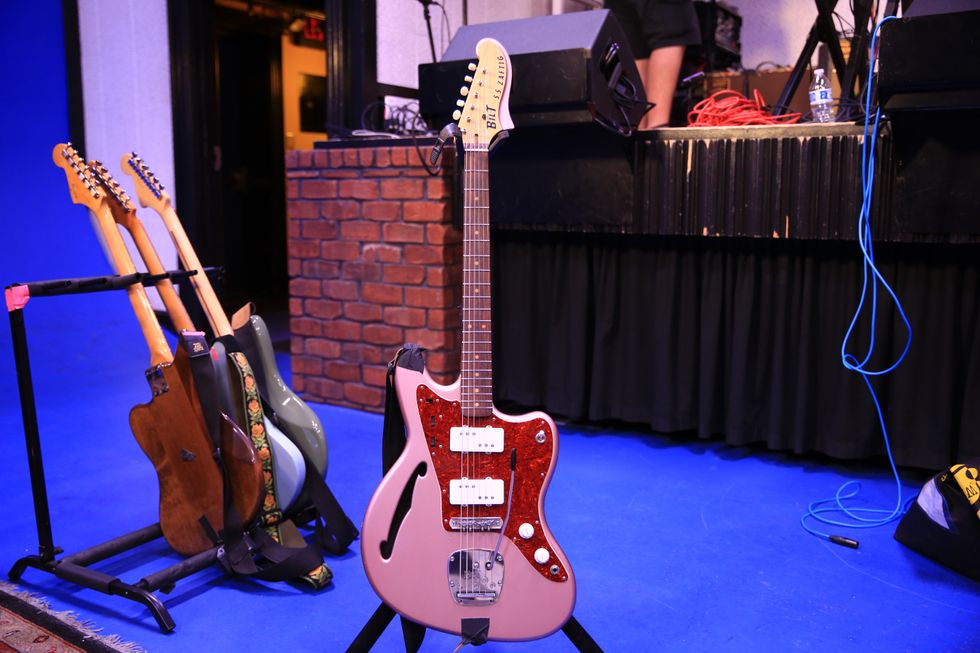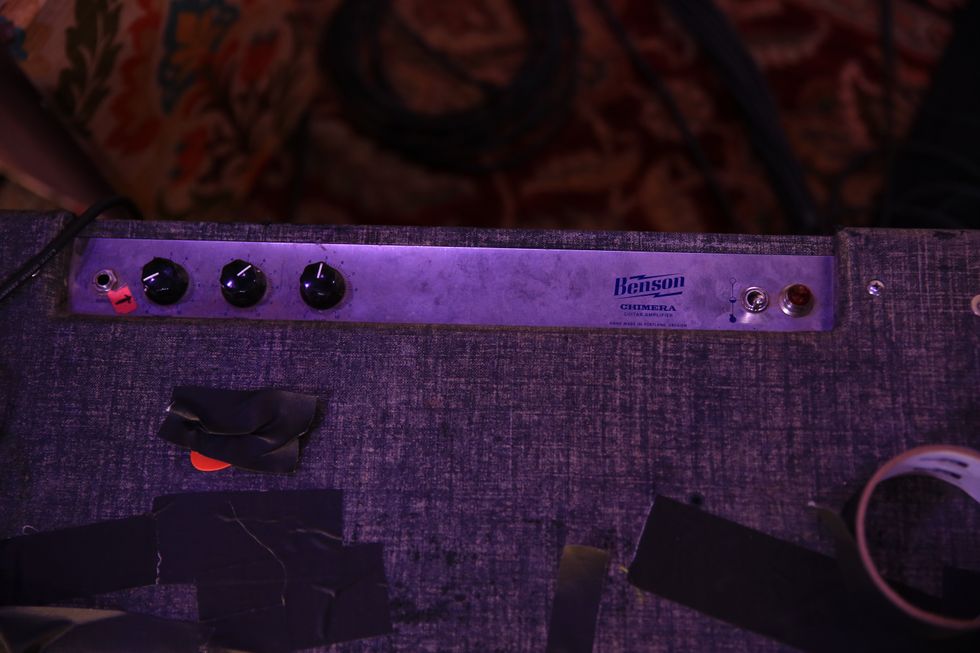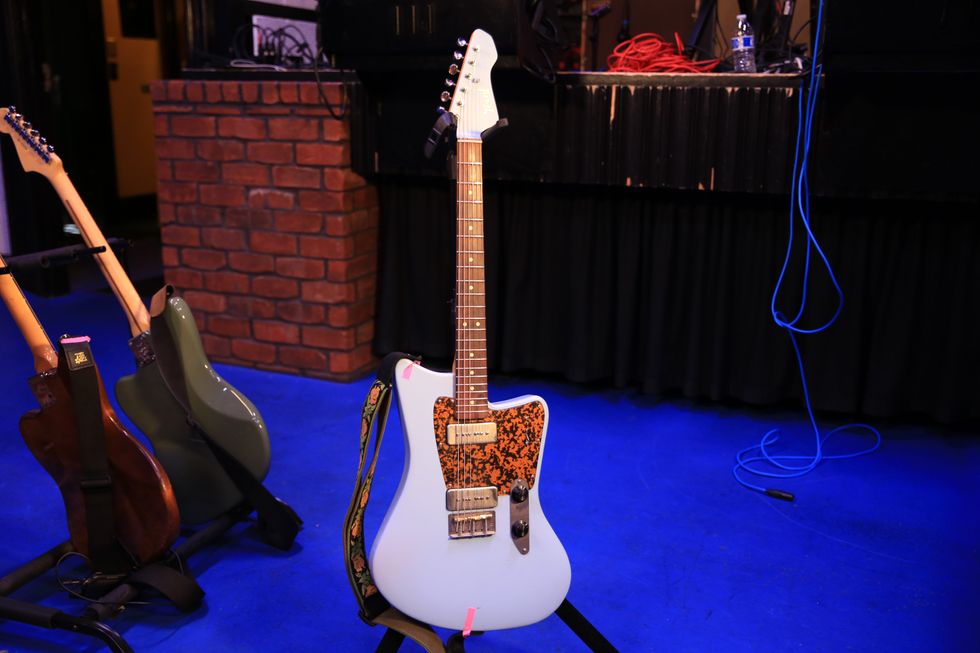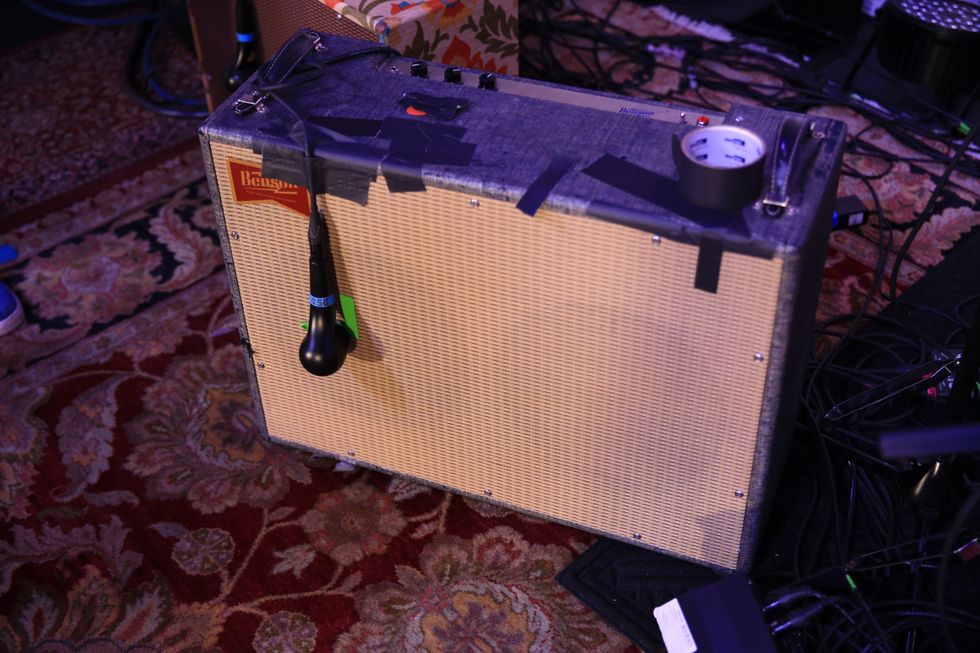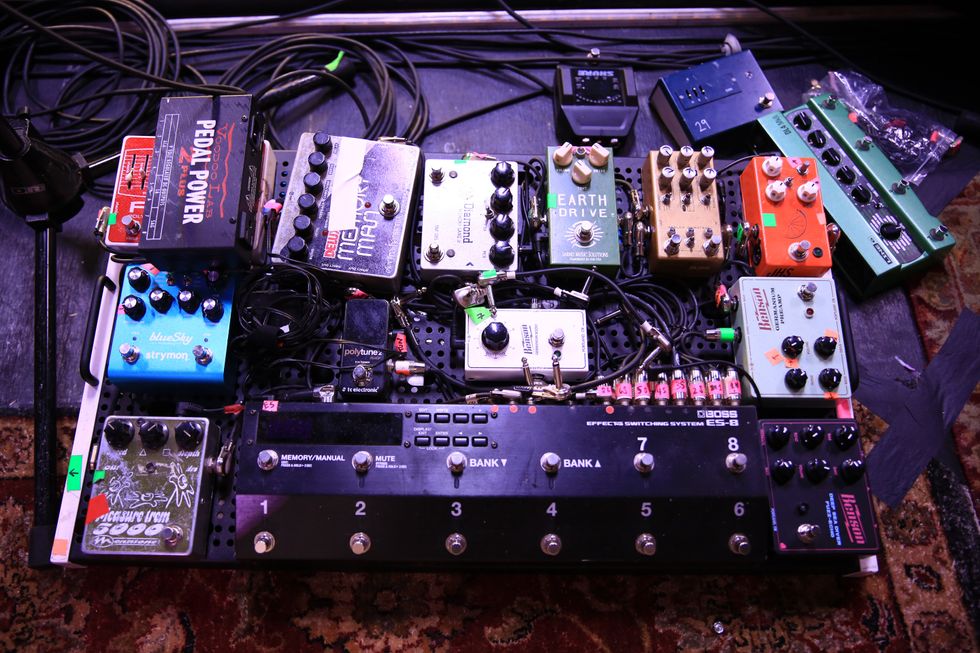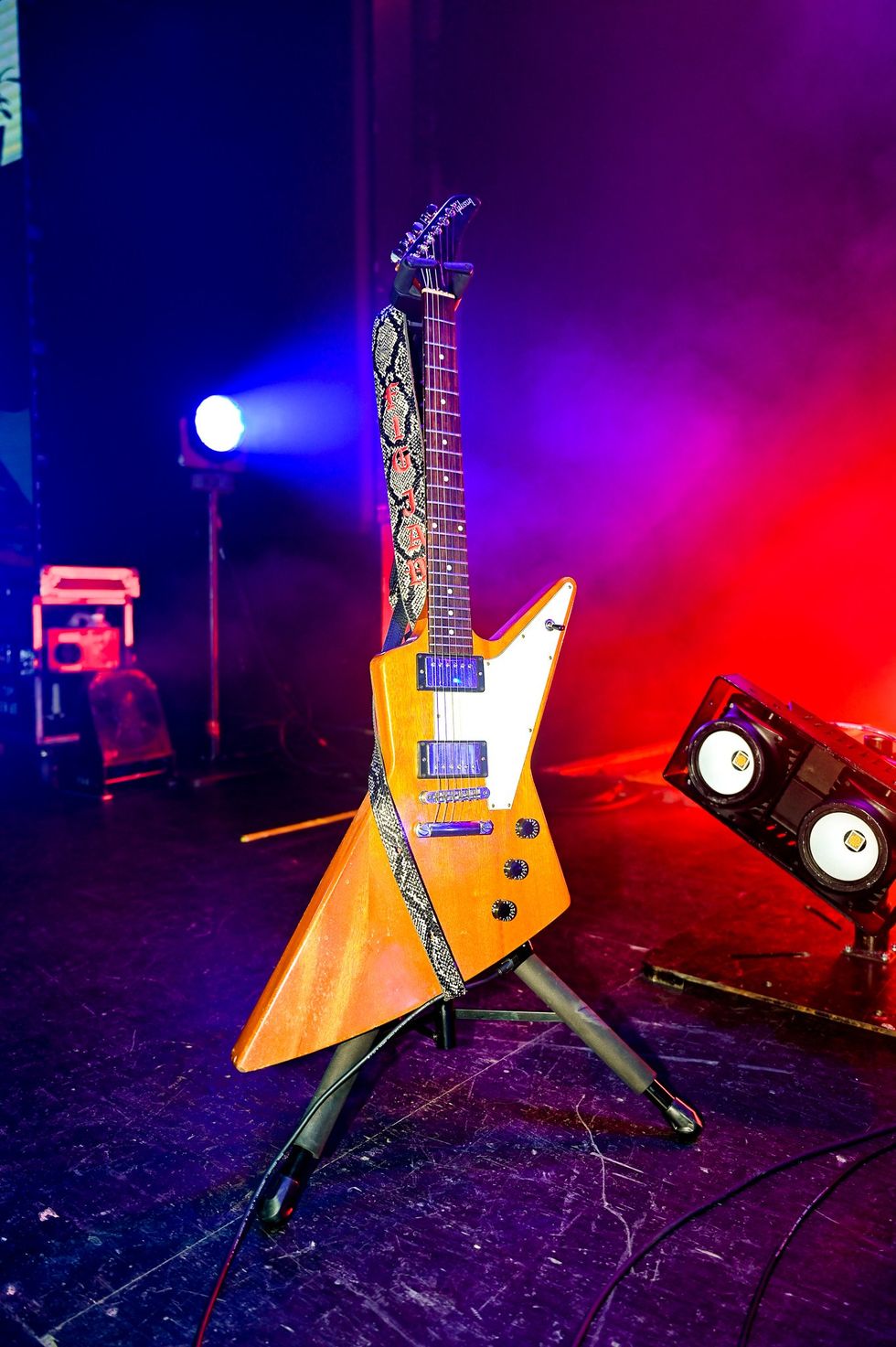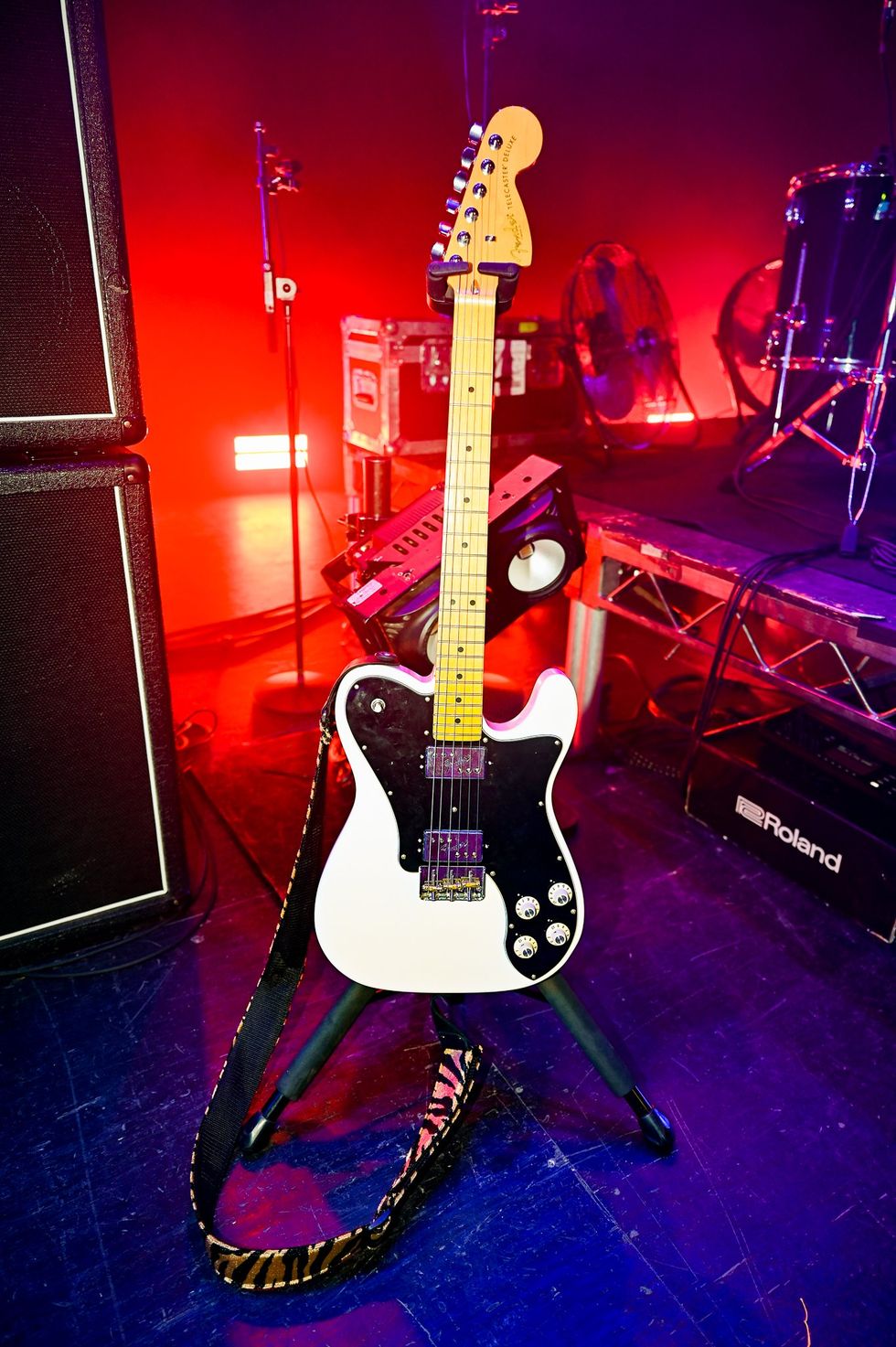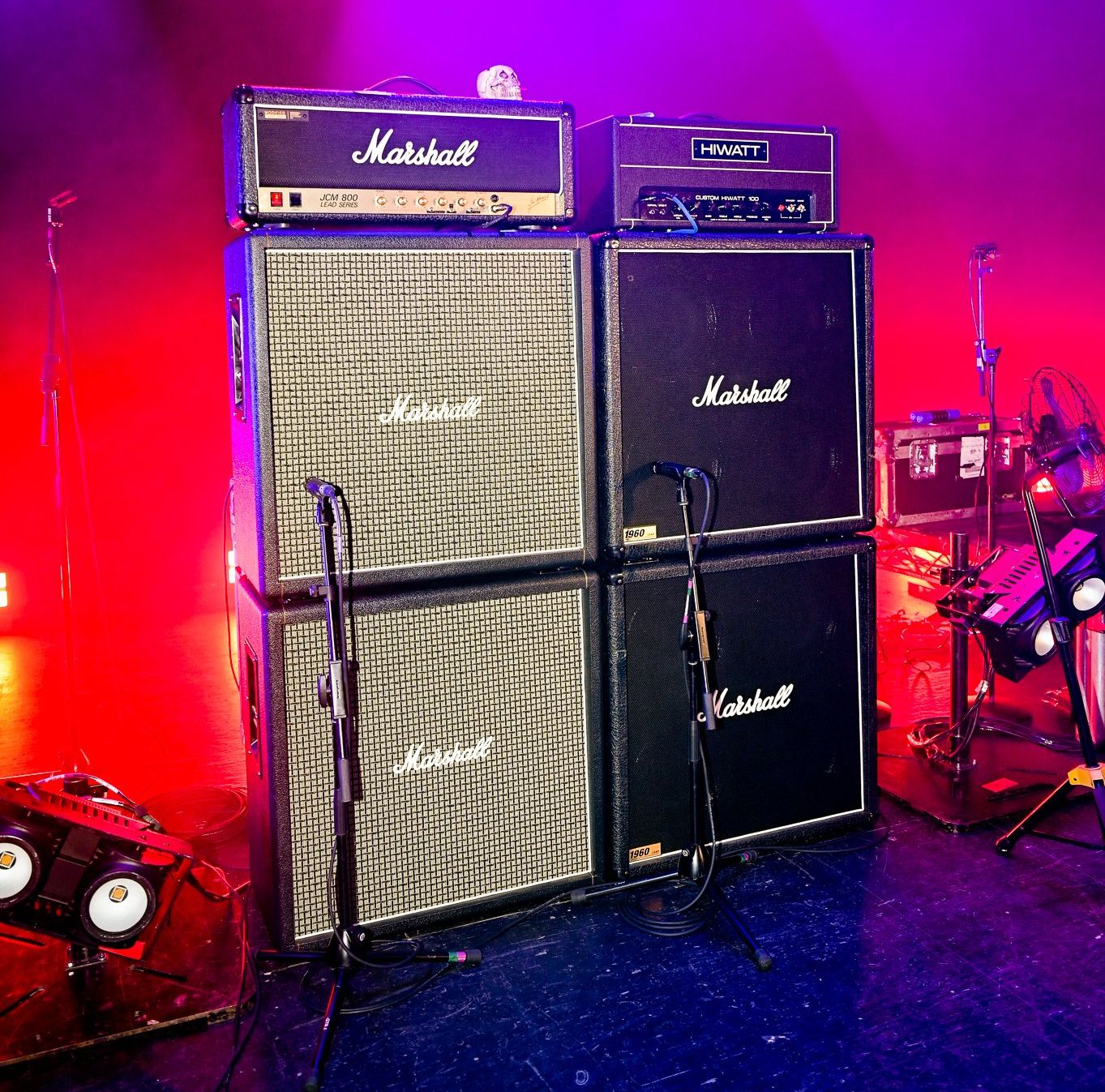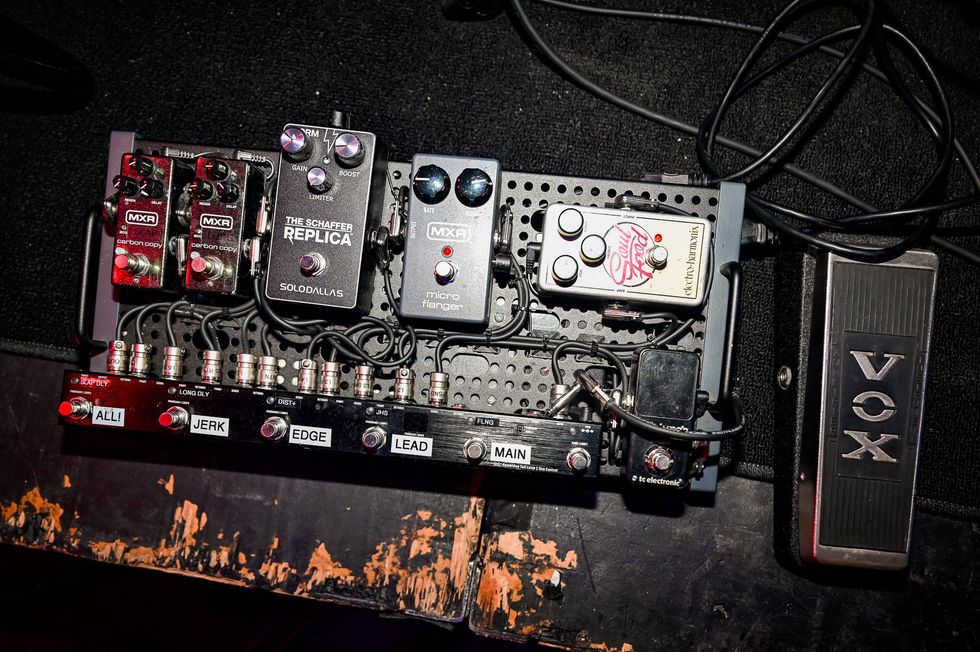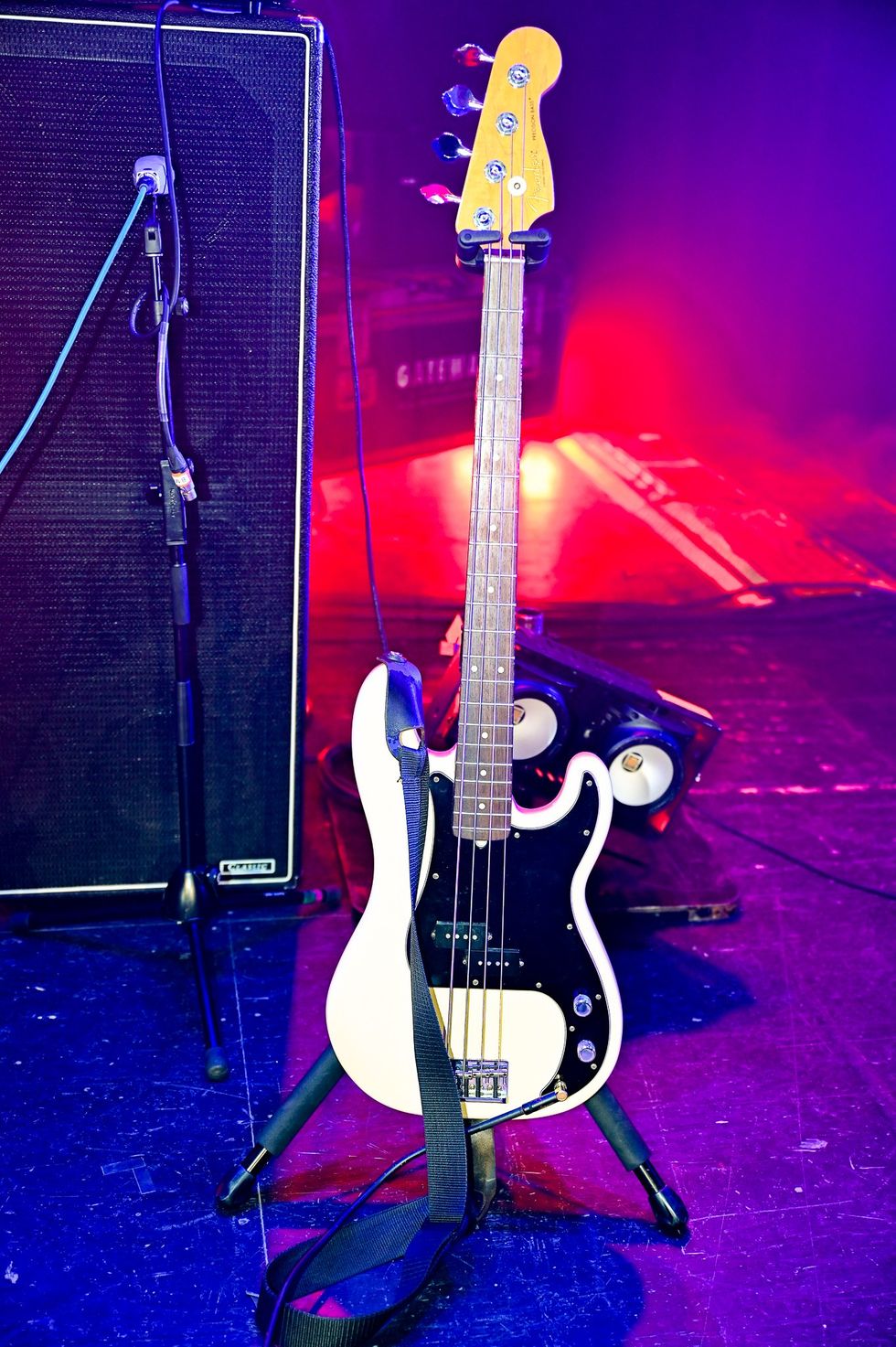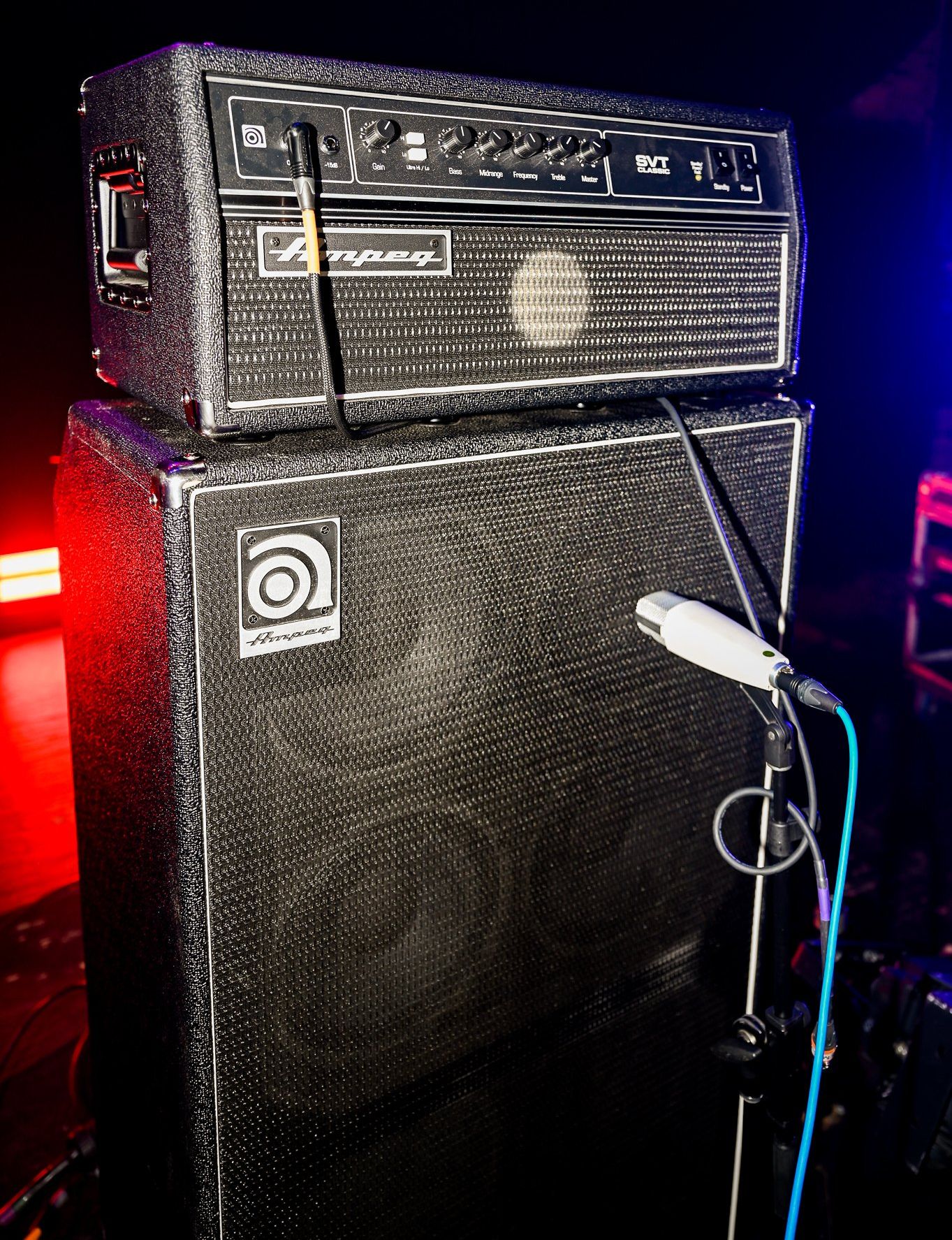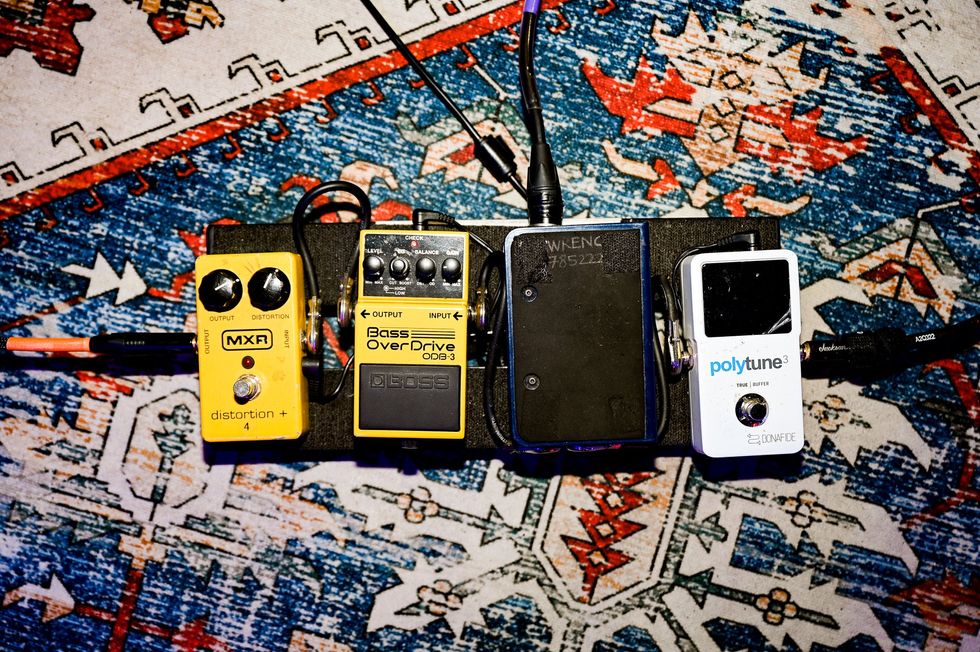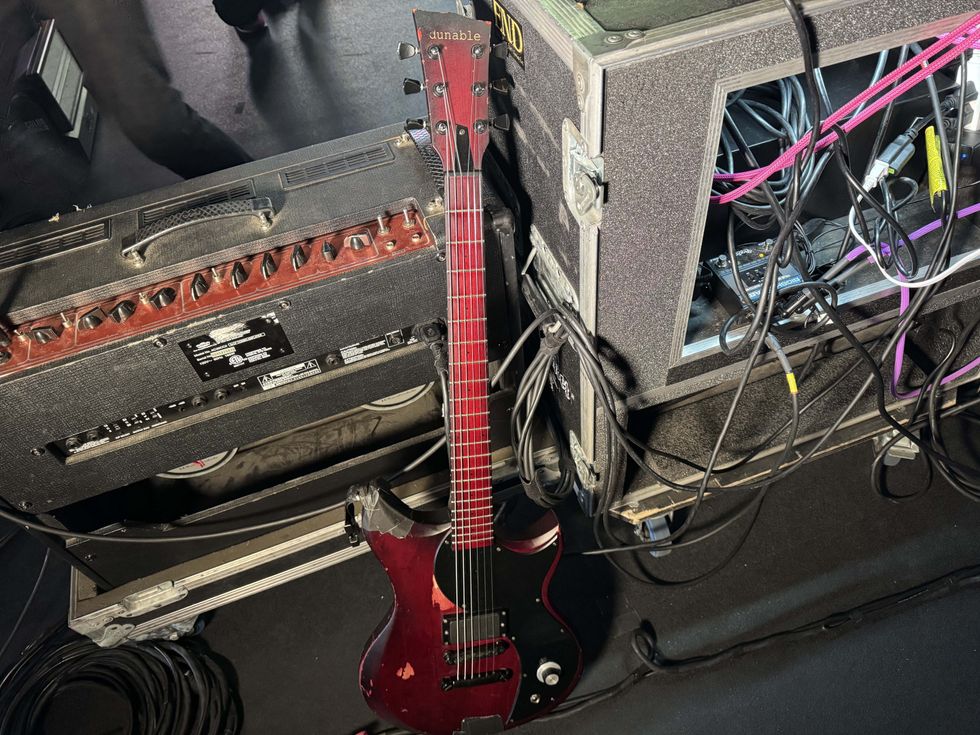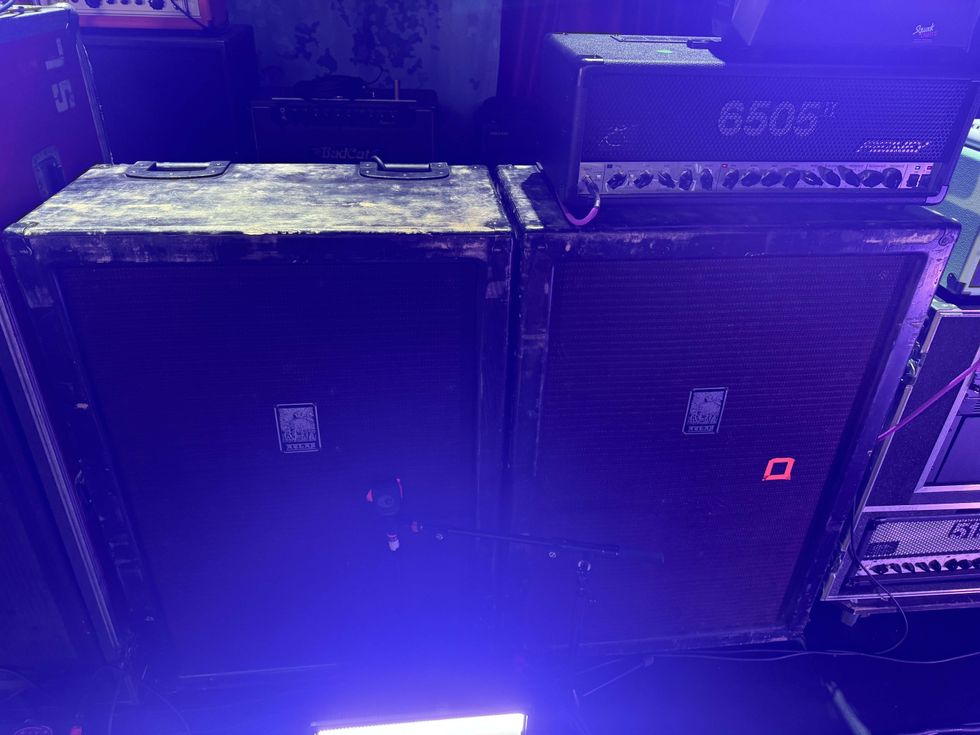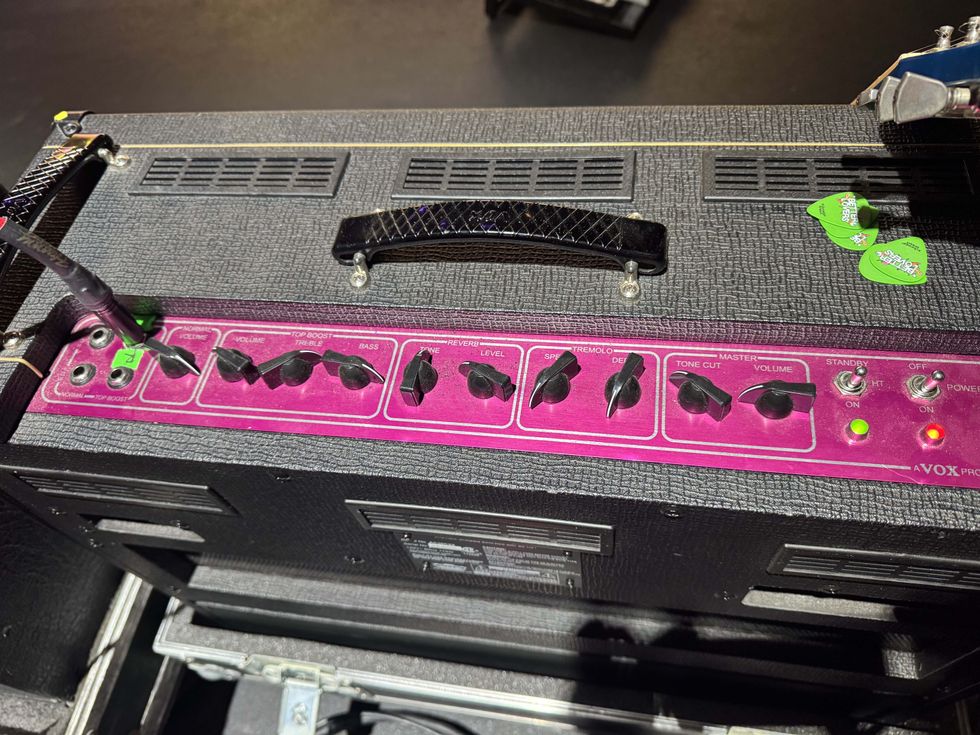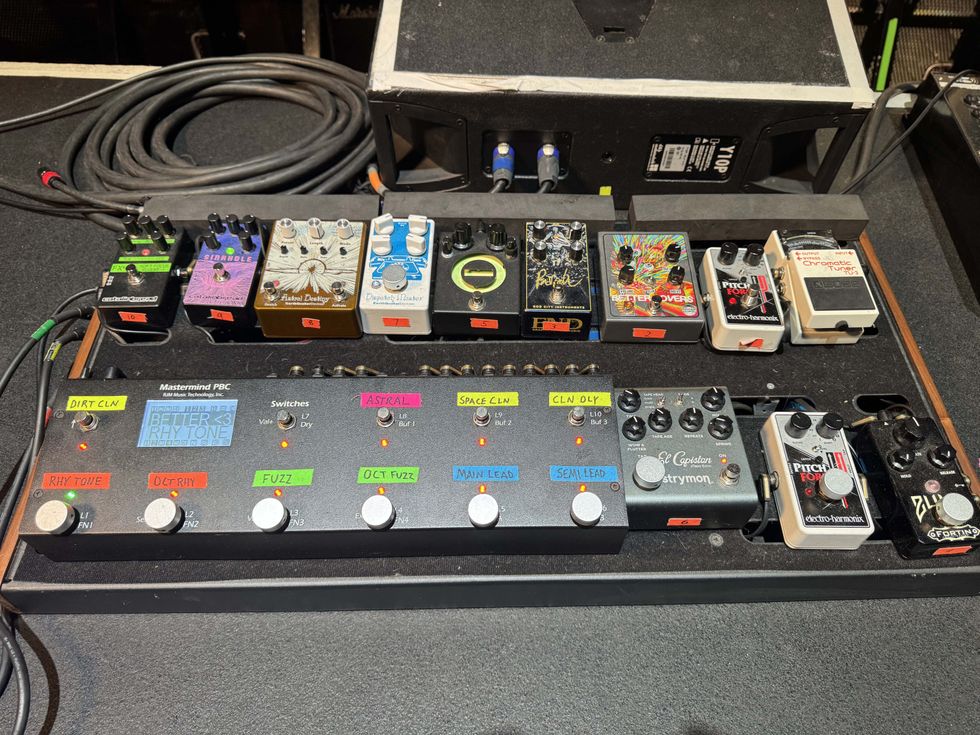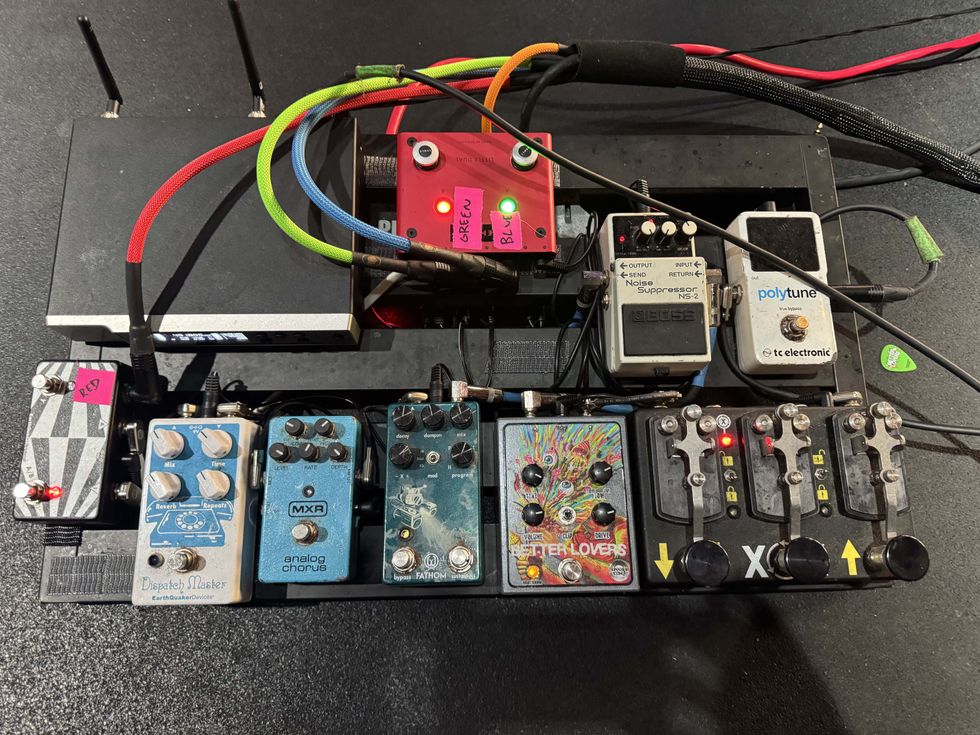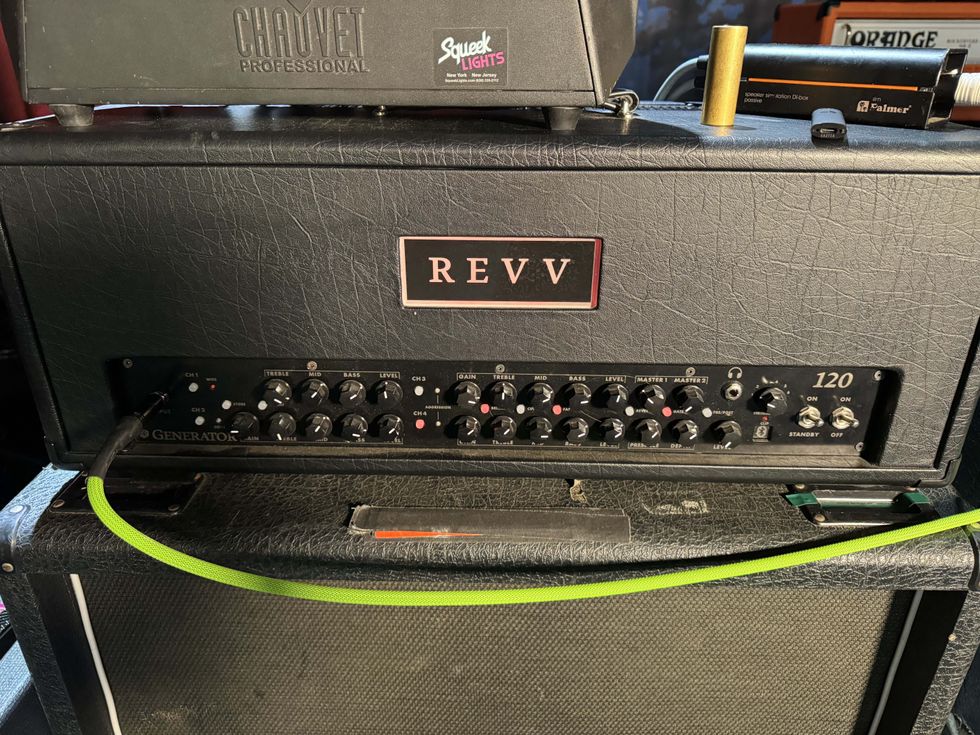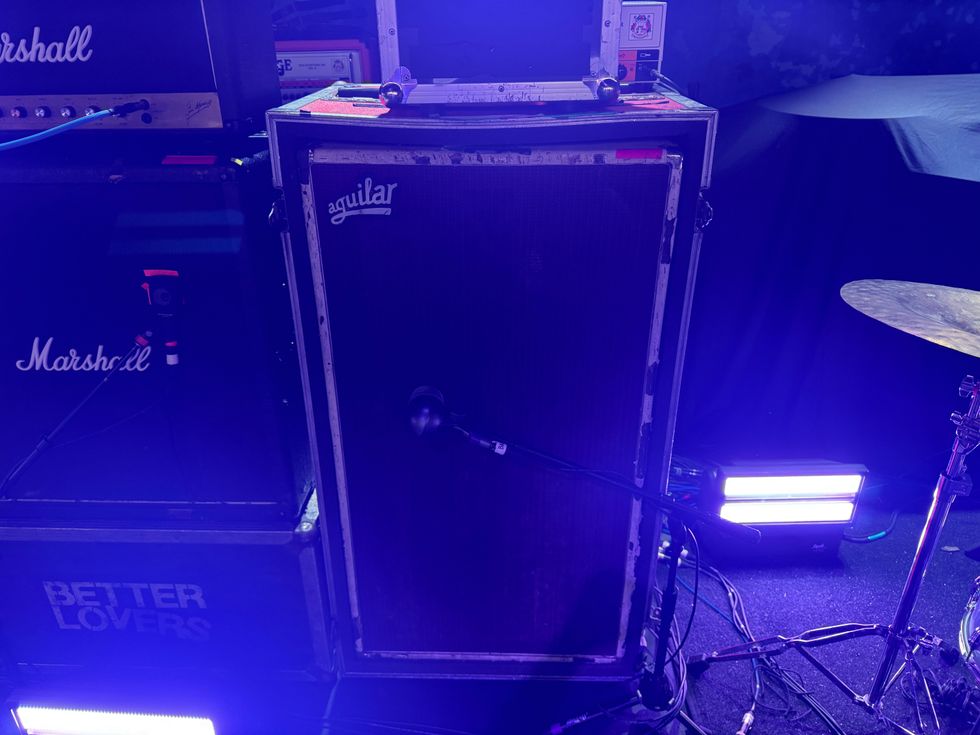Welcome back to part two of
our exploration of microphones.
Last time out, we looked at
the different types of microphones:
dynamics, condensers, and ribbons.
We talked a little bit about how
each type works and what each type
is good for. (If you missed Part 1,
visit premierguitar.com/jan2011.
Take your time, we’ll wait.)
Now that everyone is on the same page, let’s discuss a few other important microphone characteristics and how they affect the sound the mic captures.
One of the chief characteristics of a microphone is how it responds to sound from a directional standpoint. Does it “hear” sound equally well from all directions, or does it respond more accurately from in front of the microphone (that is, on axis) than it does from the sides or rear of the microphone (off axis)? The response of the microphone from all the different directions is called its “polar pattern,” and there are several different types.
An omnidirectional (or “omni”) mic has a spherical polar pattern, which allows it to respond to sound coming from all directions. Omni microphones also have a very even frequency response compared to mics with other polar patterns (all other things being equal). This makes them great as room mics. Omni mics also work well for recording delicate instruments and instruments with a wide frequency response that you want to capture without emphasizing a particular frequency. By carefully positioning an omnidirectional microphone, you can control the blend of the source’s direct sound along with the room’s ambient sound.
Because omnidirectional mics are not, by definition, directional, they don’t suffer from (or benefit from, depending on who you ask) an increase in bass frequencies when they get closer to a source. We’ve all heard the huge, bassy voices of radio announcers who are speaking with their mouth right on the microphone. This is called “proximity effect.” Because omni mics don’t evidence a proximity effect, you can place them very close to a source without adding excess low frequencies and, potentially, low-frequency distortion.
But because omni mics pick up equally well from all directions, they don’t isolate a source at all. That’s a problem if you’re trying to record several instruments at once and keep them somewhat sonically isolated, or use multiple mics on a drum kit to control the level of individual drums. Plus, for live use, omni mics have no feedback rejection at all— put one onstage with the monitors turned up, and you’ll be faced with screaming, out-of-control feedback.
A cardioid mic has a heart-shaped polar pattern. It picks up sound very well in front of the mic, less well from the sides (meaning the sound from the sides will be colored and reduced in level), and doesn’t really pick up sound from behind at all. This makes cardioids great for isolating a source when recording multiple instruments at the same time. They’re also good onstage, as long as you aim stage monitors or anything that might cause feedback or bleed at the rear of the mic, where the sound rejection is best. Cardioid mics have proximity effect, so when they’re close to the source you’ll hear a bass boost. You can use this to your advantage to fatten up tracks and to punch up the bottom end.
Hypercardioid and supercardioid mics have polar patterns that are similar to cardioid, but have even less response from the sides. Note, however, that hypercardioids pick up some sound from the rear. A hypercardioid mic is great for a singer who wants to use two stage monitors. You can aim the two monitors into the null points slightly off center from the rear of the mic and have good control over feedback.
A figure-8 polar pattern works pretty much as its name implies: The mic picks up well in front and also picks up well from behind, but rejects sound from the sides. Figure-8 mics are typically used in the studio, and you won’t find them on too many stages. They can be used to capture a source along with some room ambience or even to record two facing sound sources simultaneously. Figure-8 mics are also used for specialized stereo mic’ing techniques and for recording symphony orchestras and other large ensembles.
Some microphones allow you to switch the polar pattern, which certainly increases their flexibility. However, perhaps 95 percent (or even more) of the multi-pattern microphones in use out there are rarely, if ever, switched away from the basic cardioid pattern. It’s nice to have the option to switch between, say, omni, cardioid, and figure 8, but in practice, few of us ever do.
Another microphone characteristic to be aware of is the maximum SPL (sound pressure level) rating. This is the volume at which the microphone itself will start to distort or even to suffer damage. Dynamic mics can usually handle high SPLs, which makes them great in front of stacks, super-powered amplifiers, and drums. on the other hand, when subjected to massive volume levels, a ribbon mic can actually be damaged—the ribbon can stretch or even break.
To help increase max SPL, some microphones have a built-in “pad” that reduces the effective level hitting the mic, allowing it to handle higher levels. For example, a mic might be rated for 130 decibels, then have a 10 dB pad that can be switched in to increase the SPL handling to 140 dB.
The tradeoff is that a mic designed to handle extreme volume levels may sacrifice sensitivity. When a mic is built more robustly, it typically can’t respond as well to delicate signals.
That’s it for this month. Tune in next time, when we’ll continue our exploration of microphones.
 Mitch Gallagher is
the former editor in chief of
EQ magazine. He’s written
more than 1000 articles
and six books on recording
and music technology, and
has released an instructional
DVD on mastering. His upcoming book is
entitled Guitar Tone: Pursuing the Ultimate
Electric Guitar Sound. To learn more, visit
mitchgallagher.com.
Mitch Gallagher is
the former editor in chief of
EQ magazine. He’s written
more than 1000 articles
and six books on recording
and music technology, and
has released an instructional
DVD on mastering. His upcoming book is
entitled Guitar Tone: Pursuing the Ultimate
Electric Guitar Sound. To learn more, visit
mitchgallagher.com.
Now that everyone is on the same page, let’s discuss a few other important microphone characteristics and how they affect the sound the mic captures.
One of the chief characteristics of a microphone is how it responds to sound from a directional standpoint. Does it “hear” sound equally well from all directions, or does it respond more accurately from in front of the microphone (that is, on axis) than it does from the sides or rear of the microphone (off axis)? The response of the microphone from all the different directions is called its “polar pattern,” and there are several different types.
An omnidirectional (or “omni”) mic has a spherical polar pattern, which allows it to respond to sound coming from all directions. Omni microphones also have a very even frequency response compared to mics with other polar patterns (all other things being equal). This makes them great as room mics. Omni mics also work well for recording delicate instruments and instruments with a wide frequency response that you want to capture without emphasizing a particular frequency. By carefully positioning an omnidirectional microphone, you can control the blend of the source’s direct sound along with the room’s ambient sound.
Because omnidirectional mics are not, by definition, directional, they don’t suffer from (or benefit from, depending on who you ask) an increase in bass frequencies when they get closer to a source. We’ve all heard the huge, bassy voices of radio announcers who are speaking with their mouth right on the microphone. This is called “proximity effect.” Because omni mics don’t evidence a proximity effect, you can place them very close to a source without adding excess low frequencies and, potentially, low-frequency distortion.
But because omni mics pick up equally well from all directions, they don’t isolate a source at all. That’s a problem if you’re trying to record several instruments at once and keep them somewhat sonically isolated, or use multiple mics on a drum kit to control the level of individual drums. Plus, for live use, omni mics have no feedback rejection at all— put one onstage with the monitors turned up, and you’ll be faced with screaming, out-of-control feedback.
A cardioid mic has a heart-shaped polar pattern. It picks up sound very well in front of the mic, less well from the sides (meaning the sound from the sides will be colored and reduced in level), and doesn’t really pick up sound from behind at all. This makes cardioids great for isolating a source when recording multiple instruments at the same time. They’re also good onstage, as long as you aim stage monitors or anything that might cause feedback or bleed at the rear of the mic, where the sound rejection is best. Cardioid mics have proximity effect, so when they’re close to the source you’ll hear a bass boost. You can use this to your advantage to fatten up tracks and to punch up the bottom end.
Hypercardioid and supercardioid mics have polar patterns that are similar to cardioid, but have even less response from the sides. Note, however, that hypercardioids pick up some sound from the rear. A hypercardioid mic is great for a singer who wants to use two stage monitors. You can aim the two monitors into the null points slightly off center from the rear of the mic and have good control over feedback.
A figure-8 polar pattern works pretty much as its name implies: The mic picks up well in front and also picks up well from behind, but rejects sound from the sides. Figure-8 mics are typically used in the studio, and you won’t find them on too many stages. They can be used to capture a source along with some room ambience or even to record two facing sound sources simultaneously. Figure-8 mics are also used for specialized stereo mic’ing techniques and for recording symphony orchestras and other large ensembles.
Some microphones allow you to switch the polar pattern, which certainly increases their flexibility. However, perhaps 95 percent (or even more) of the multi-pattern microphones in use out there are rarely, if ever, switched away from the basic cardioid pattern. It’s nice to have the option to switch between, say, omni, cardioid, and figure 8, but in practice, few of us ever do.
Another microphone characteristic to be aware of is the maximum SPL (sound pressure level) rating. This is the volume at which the microphone itself will start to distort or even to suffer damage. Dynamic mics can usually handle high SPLs, which makes them great in front of stacks, super-powered amplifiers, and drums. on the other hand, when subjected to massive volume levels, a ribbon mic can actually be damaged—the ribbon can stretch or even break.
To help increase max SPL, some microphones have a built-in “pad” that reduces the effective level hitting the mic, allowing it to handle higher levels. For example, a mic might be rated for 130 decibels, then have a 10 dB pad that can be switched in to increase the SPL handling to 140 dB.
The tradeoff is that a mic designed to handle extreme volume levels may sacrifice sensitivity. When a mic is built more robustly, it typically can’t respond as well to delicate signals.
That’s it for this month. Tune in next time, when we’ll continue our exploration of microphones.
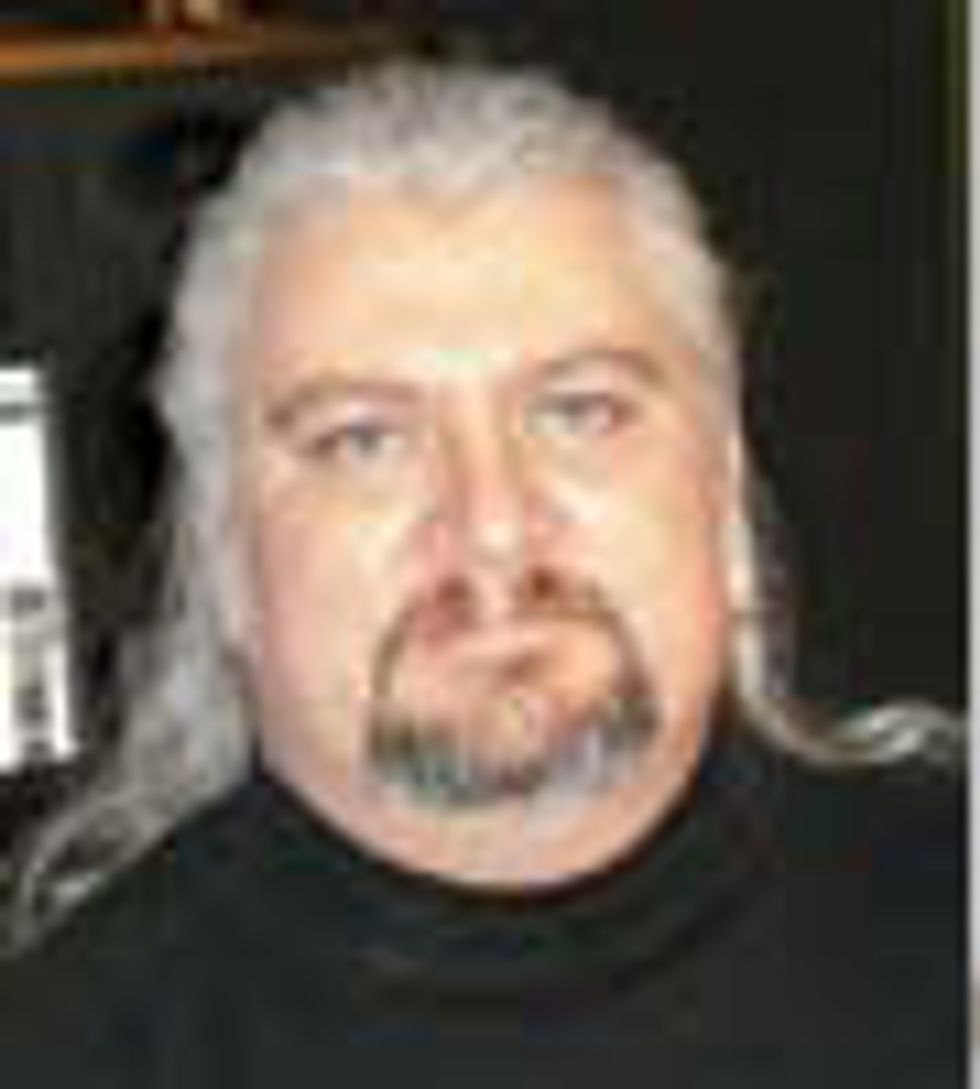 Mitch Gallagher is
the former editor in chief of
EQ magazine. He’s written
more than 1000 articles
and six books on recording
and music technology, and
has released an instructional
DVD on mastering. His upcoming book is
entitled Guitar Tone: Pursuing the Ultimate
Electric Guitar Sound. To learn more, visit
mitchgallagher.com.
Mitch Gallagher is
the former editor in chief of
EQ magazine. He’s written
more than 1000 articles
and six books on recording
and music technology, and
has released an instructional
DVD on mastering. His upcoming book is
entitled Guitar Tone: Pursuing the Ultimate
Electric Guitar Sound. To learn more, visit
mitchgallagher.com.






